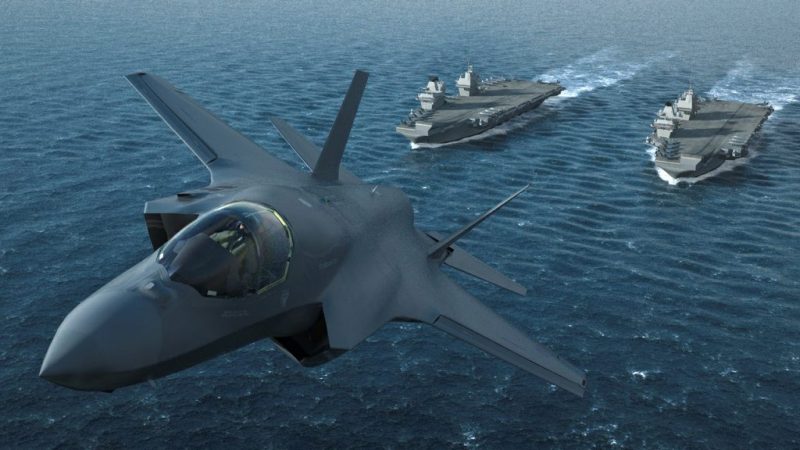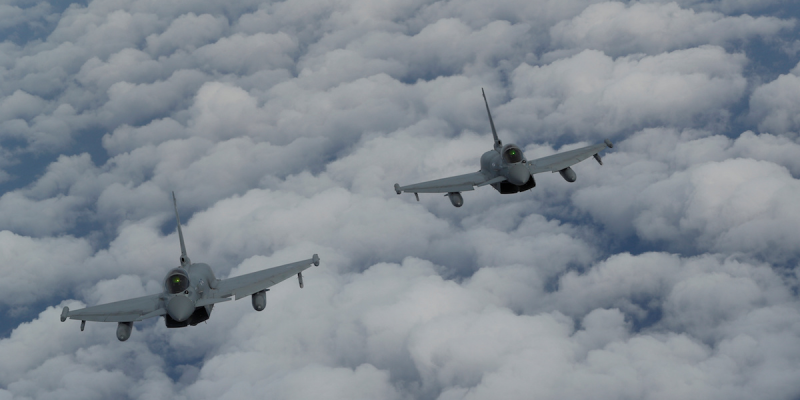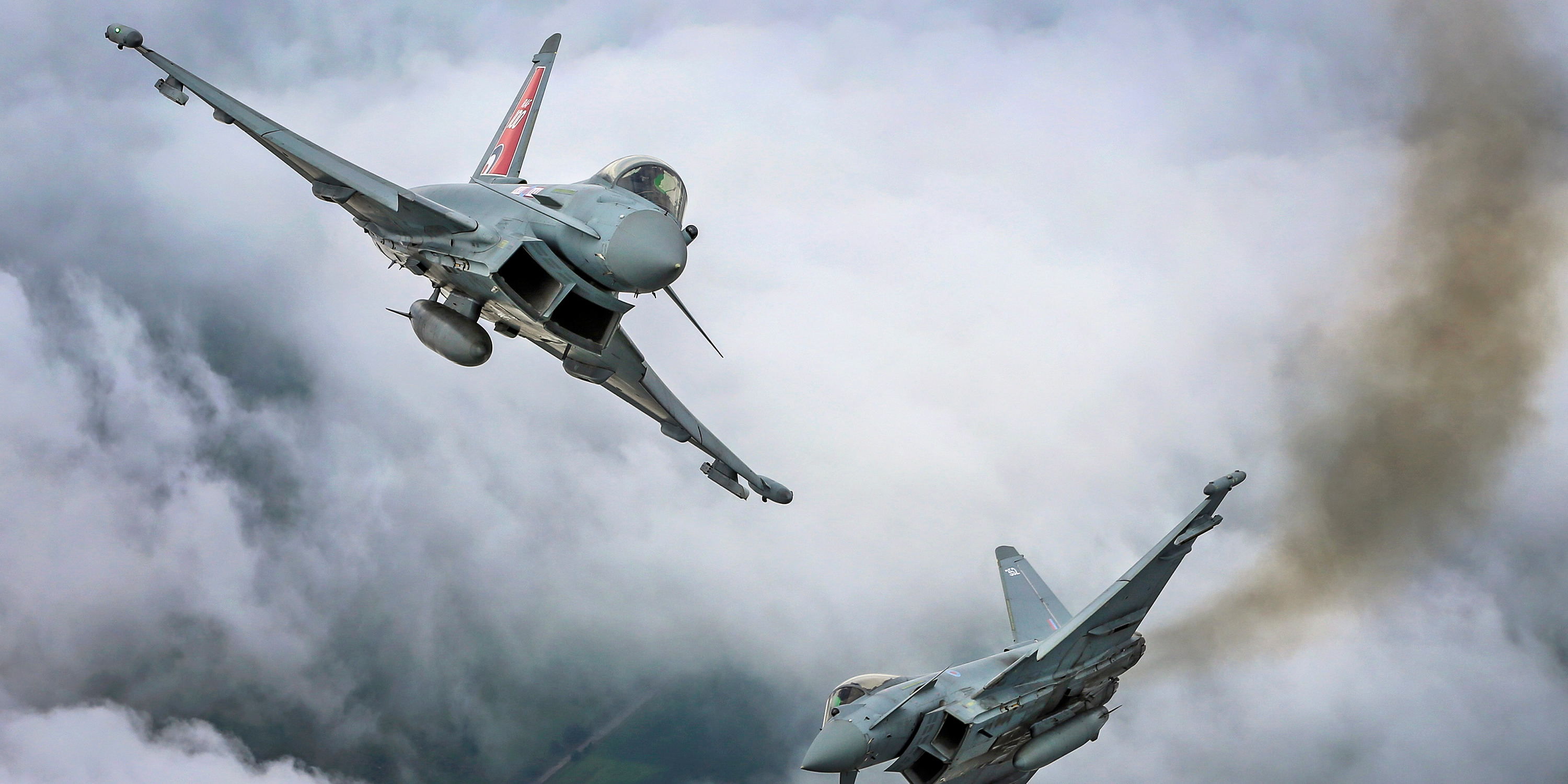- NATO needs the F-35 to keep up with evolving threats from Russia, but in a decade, only 20% of NATO’s forces will be flying fifth-generation fighters – meaning 80% of them probably can’t fight against Russia on day one.
- This puts NATO at a huge disadvantage against Russia, which has new, cheap, and deadly systems meant to shoot down NATO’s legacy aircraft by the hundreds.
- Simon Rochelle, the Royal Air Force’s air vice-marshal, has proposed plans to keep legacy aircraft fighting and supercharged with the information pulled from fifth-gen fighters and other support planes.
- Rochelle said that if NATO can’t fix its interoperability problems across its 28 members, it will lose the next war against Russia.
LONDON – Much of NATO’s hope to remain a relevant fighting force in the coming decades has been pinned on the introduction of the F-35, but a simple look at the numbers shows that one airframe alone won’t turn the tide against Russia.
“If we think we’re going to wait for the next generation to sort the problems out, I can categorically tell you we will fail when next major conflict occurs.” Simon Rochelle, the Royal Air Force’s air vice-marshal, told the Royal United Service Institute’s Combat Air Survivability conference on Wednesday.
“In 2030, 80% of the European NATO forces – should one of those situations occur, God forbid – will be gen 4 fighters. You can’t walk away from that,” he continued, referring to pre-stealth jets as belonging to a fourth generation of fighters.
While Rochelle sounded confident in the F-35’s ability to meet current and future threats, he stressed that NATO wouldn’t hit critical mass in its fifth-generation fleets in time for the next big conflict.
Read more: The US Air Force just tested a stealth combat drone for suicide missions against Russia and China
But instead of demanding a deeper well of F-35s, Rochelle said the only practical way was to spread the benefits of the F-35 horizontally, to other airframes.
"I need the F-35's ISR (intelligence, surveillance, and reconnaissance) information off boarded," he said. "We have F-35s and Typhoons, and I have to use those symbiotically. I can't afford poor interoperability."
Too little, too late

While the UK has its own fifth-gen fighter planned, the Tempest, Rochelle said the slow pace of fielding the fighters slightly defeated the purpose.
"If both those airframes take 10 years to mature to the next level, they won't fit the purpose," he said.
In the meantime, Russia has come up with a slew of new, low-cost, and potentially potent weapons systems meant to down NATO jets.
"The threats, in terms of how it is progressing, [are] significant," Rochelle said of Russian systems such as the S-400, which has begun to proliferate across the globe with China, Syria, and even the NATO member Turkey looking to buy.
"Those systems are so complex and so capable that a price point for those systems of defense is far cheaper than the long running programs we have in the aircraft to development," Rochelle said. "We can't afford not to respond at pace, because our adversaries are responding at pace."
An S-400 can spot even stealth aircraft such as the F-35 and, using a relatively cheap missile, down a jet that costs many hundred times its own value.
Additionally, Russia may have the even more advanced S-500 system online by the time fifth-generation fighter aircraft hit the front lines en masse.
"They are formidable beasts," Rochelle said of Russia's new systems, which include directed energy weapons.
Think fast

At the Rapid Capabilities Office in the Royal Air Force, Rochelle's job is to innovate new solutions to these mounting problems and get them done fast.
Rochelle discussed cutting down extensive, sometimes grueling testing requirements for non-mission critical components of fighter aircraft. He also explained how his office was able to get Tornado jets fighting ISIS in 191 days.
When it came to networking the F-35 into the bigger NATO fight against Russia, Rochelle was full of ideas.
"I want to be able to connect a Rivet Joint, through space, into the cockpit … We need to be thinking in those dimensions," he said, referencing the US and UK's standard airborne signals-intelligence plane that can help spot anti-air batteries like Russia's S-400.
Read more: Russia could destroy the F-35 from within with a missile-defense sale to Turkey
"Ideally, I'd like to reprogram the F-35 in flight" with new information, potentially including things spotted by Rivet Joints and other legacy aircraft.
Essentially, Rochelle knows that Europe won't have B-21s, F-22s, and F-35s of its own on day one of a conflict with Russia, and has launched a series of programs to make his Typhoons fight harder with the benefit of targeting and threat data pulled from F-35s.
In effect, he's gunning for a much cheaper, lighter air force that takes the cutting edge of the F-35 and spreads it out across the entire mass of NATO's jet fighter fleet.

